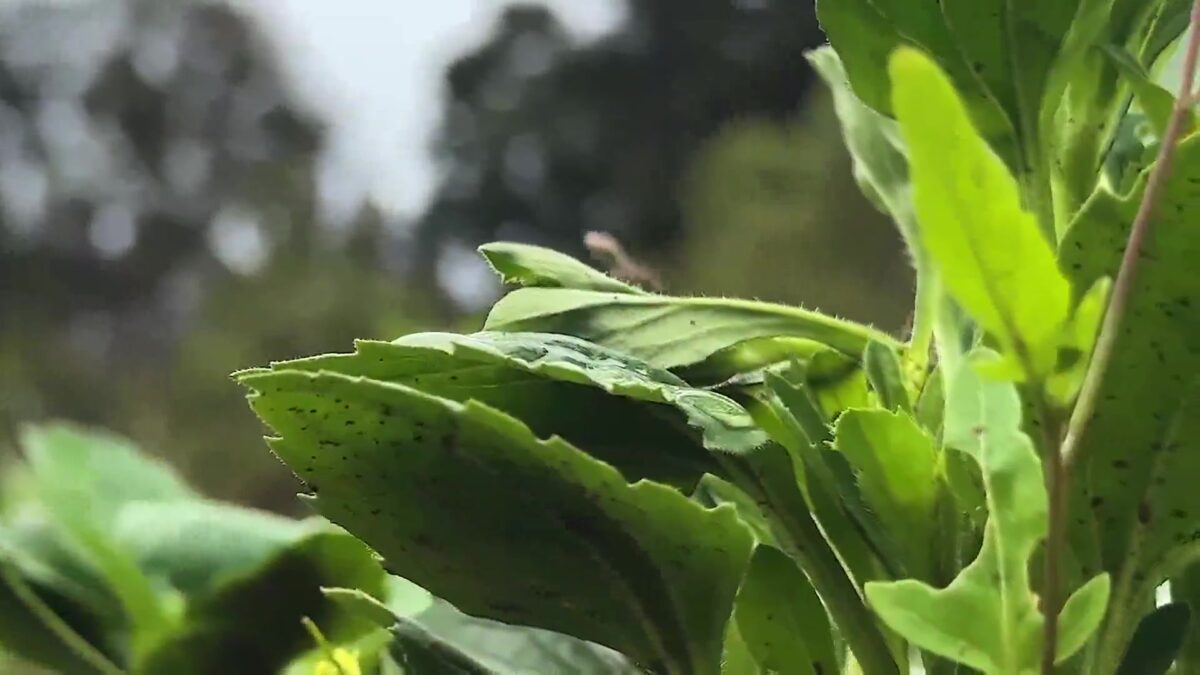Trump’s First 100 Days: Foodbank of Santa Barbara County projects more food insecurity

Patricia Martellotti
GOLETA, Calif. – Harvest is going well director for Juan Osorio of Osorio Family Farms in Carpinteria.
“It’s looking good … it’s getting there maybe another three to four weeks and we’ll have some red round Mexican Kabasa,” said farmer Juan Osorio of Osorio Family Farms.
But in three to four weeks, President Trump’s new directive will force the Food Purchase Assistance Cooperative Agreement Program – known as LFPA to shut down leaving farmers like Osorio hanging.
The new program was run by the USDA to support local, underserved farmers.
Now, those farmers are going to have to change course.
“As right now it is affecting us a good amount … in the future we don’t know what I will provide for my family … work for my family,” said Osorio.
“It was really dramatic because you know this is 50% of our business as an aggregator … it is providing local organic produce to food banks through this project. It’s really heartbreaking for me to have to tell all of my farmers that their season was done,” said owner Jason Lesh of Farm Cart Organics.
“Down over there, we had our onions and cabbages and this is all just zucchini … beans,” said Osorio.
“It’s a new program it’s been a wonderful program that’s been a lifeline for our local farmers in our community. So it’s really a blow to us and a blow to our community members who need help,” said director of marketing Laurel Alcantar of the Foodbank of Santa Barbara.
The foodbank received over $500,000 a year to make local food purchases from the LFPA.
As a result of president Trump’s new directive, that money will be gone.
From the Foodbank of Santa Barbara County:
Federal and state cuts of food and funding are occurring at an unprecedented level.
The Foodbank of Santa Barbara County is tracking developments in legislation closely, and we are prepared to respond to better serve our community.
Commodity Credit Corporation Program (CCC)
Total Annual Loss for the Foodbank: 1,511,691 pounds of food – approximately $2,630,342
→ The Commodity Credit Corporation (CCC)was a USDA program that moved nutritious food from farms to food banks to our neighbors in need. The CCC was critical for working families – nearly half of all people experiencing food insecurity do not qualify for SNAP, and many SNAP recipients run out of benefits before their next month’s benefits arrive. These families come to the Foodbank network and receive food from programs like CCC. On March 27, 2025, the USDA confirmed the cancelation of CCC.
Local Food Purchase Assistance Cooperative Agreement Program (LFPA)
Total Annual Funding the Foodbank Will Lose:$552,900
→ The Local Food Purchase Assistance Cooperative Agreement Program (LFPA) was a program run by the USDA that provided funding to purchase food produced in-state in order to support local, underserved farmers. Our LFPA cooperative agreement enabled the Foodbank to connect with farmers to source fresh produce that was bulk-packed and delivered to our facilities weekly – approximately 30,000 pounds per month. LFPA25 (the program’s third phase) has been canceled, effectively ending the program.
The Emergency Food and Shelter Program (EFSP)
Potential Annual Loss for the Foodbank:$24,015
→ The Emergency Food and Shelter Program (EFSP) was a FEMA-funded program administered through United Way that has been around since 1987. The program supplements and expands the ongoing work of local nonprofit organizations to provide shelter, food, and supportive services to individuals and families who are experiencing, or at risk of experiencing, hunger and/or homelessness. We have received notice that EFSP funds are paused indefinitely.
CalFood Funding
Potential Annual Loss for the Foodbank:$1,200,000
→ CalFood provides state dollars to food banks to purchase California-grown and produced foods. This fiscal year, the Foodbank received $1.3MM from CalFood, which was used to purchase food from in-state farmers. With next year’s proposed budget, the Foodbank will receive approximately $100,000 in CalFood Funding – a $1.2MM loss.
Supplemental Nutrition Assistance Program (SNAP) / CalFresh (in California)
In addition to direct food and funding cuts, the Foodbank is preparing for major SNAP cuts. As part of budget reconciliation, the Senate passed a $340 billion Budget Resolution that is expected to include cuts to food and nutrition programs. The House followed with its own reconciliation proposal, which includes $2 trillion in spending cuts alongside $4.5 trillion in tax cuts.
The future of SNAP funding is influenced by both the Farm Bill and the budget reconciliation process. The Farm Bill, which governs SNAP and other agricultural programs, is up for reauthorization in September.
More than 55,000 people in Santa Barbara County utilized SNAP in 2024 to feed themselves and their families. Federal cuts to SNAP would leave these families without essential food assistance, increasing community reliance on the Foodbank of Santa Barbara County.